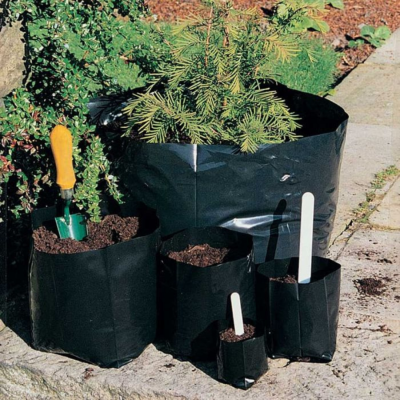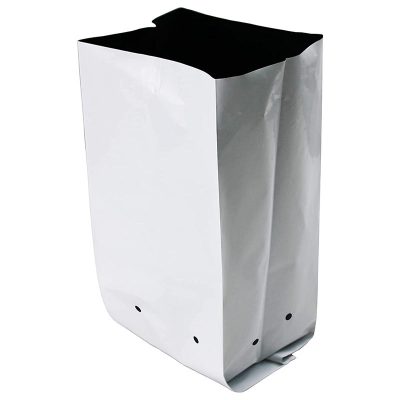Proper watering and drainage are crucial for the health and success of plants in plastic grow bags. Here are some tips to ensure optimal watering and drainage:
- Use Well-Draining Potting Mix: Start with a high-quality potting mix specifically formulated for container gardening. Avoid using heavy garden soil, as it can impede drainage. Well-draining potting mixes allow excess water to flow through while retaining sufficient moisture for the plants.
- Choose Grow Bags with Drainage Holes: Select plastic grow bags that have pre-punched drainage holes at the bottom. These holes help water to drain freely, preventing waterlogging and root rot. If your grow bags don’t have drainage holes, create them yourself by making small slits or holes using a sharp object.
- Water Slowly and Deeply: When watering your plants, apply water slowly and evenly to ensure thorough penetration of the potting mix. Water until you see water draining out from the bottom drainage holes. This helps ensure that the entire root system receives sufficient moisture.
- Avoid Overwatering: Overwatering can lead to waterlogged soil and root rot. Allow the top inch of the potting mix to dry out slightly before watering again. Check the moisture level by inserting your finger into the soil up to the first knuckle. If it feels dry at that depth, it’s time to water.
- Water According to Plant Needs: Different plants have varying water requirements. Consider the specific needs of each plant and adjust your watering schedule accordingly. Some plants prefer consistently moist soil, while others prefer a slightly drier period between waterings. Research the watering requirements of your specific plants for optimal results.
- Monitor Drainage: After watering, observe how quickly the water drains from the grow bags. If water tends to pool or drains very slowly, it may indicate inadequate drainage. In such cases, consider adding more drainage holes or using a layer of gravel or small stones at the bottom of the grow bags to enhance drainage.
- Mulch to Retain Moisture: Apply a layer of organic mulch, such as wood chips or straw, on the surface of the potting mix. Mulching helps retain moisture in the soil, reduces evaporation, and regulates soil temperature. It also prevents rapid drying of the potting mix in plastic grow bags.
- Adjust Watering Based on Environmental Conditions: Environmental factors like temperature, humidity, and sunlight intensity can affect watering needs. During hot and dry weather, plants may require more frequent watering, while cooler and more humid conditions may necessitate less frequent watering. Be mindful of these factors and adjust your watering schedule accordingly.
- Monitor Plant Health: Keep a close eye on your plants’ overall health and growth. Wilting, yellowing leaves, or stunted growth can be signs of either under- or overwatering. Adjust your watering practices based on the plant’s response and make necessary changes to ensure their well-being.
By following these watering and drainage tips, you can maintain a healthy moisture balance in your plastic grow bags, promoting optimal plant growth and minimizing the risk of water-related issues. Remember, it’s important to strike a balance between providing sufficient moisture and avoiding excessive water retention to ensure the well-being of your plants.








